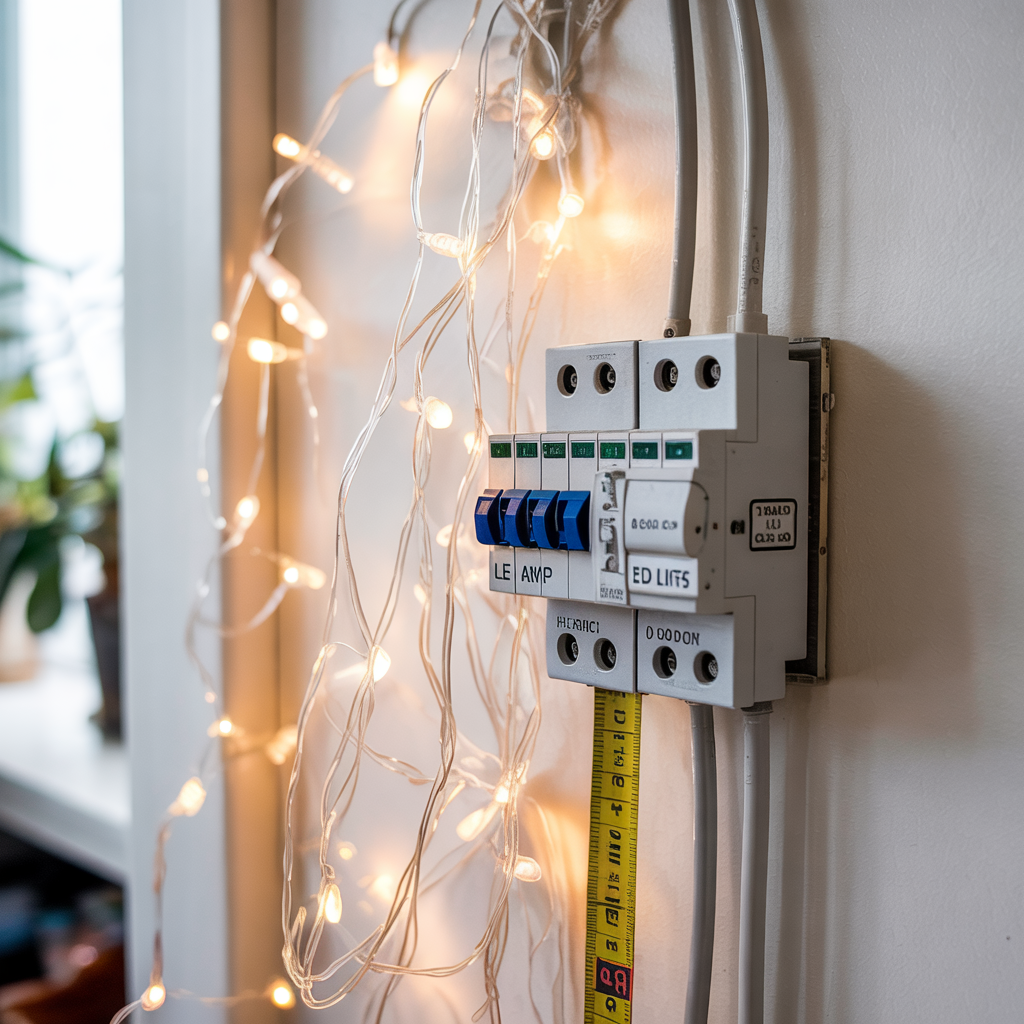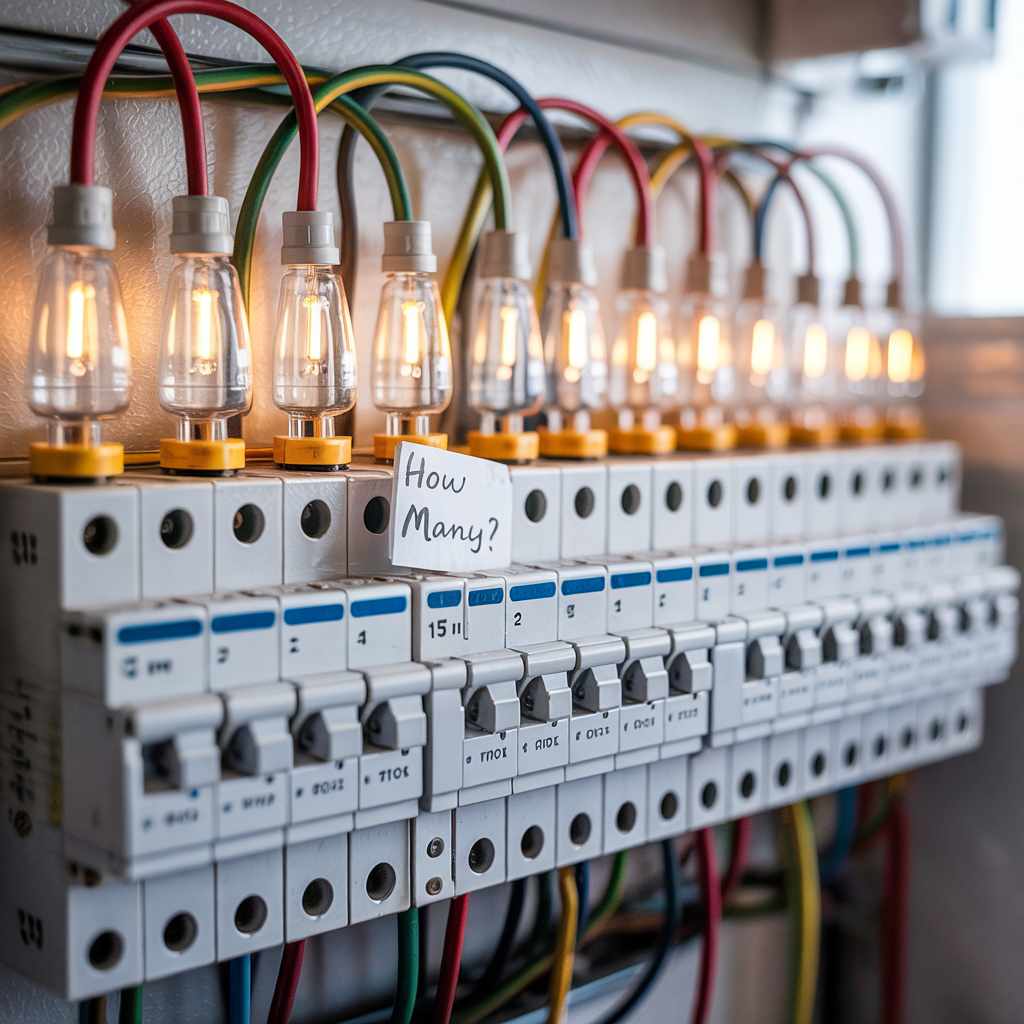How Many LED Lights on a 15 AMP Circuit? In Detail Discussion
How many LED lights can you safely power on a single 15-amp circuit? It’s a question many homeowners and electricians grapple with. This comprehensive guide will delve into the complexities of electrical circuits, power consumption, and LED lighting to provide you with a clear, practical understanding of how to determine the maximum number of LED…
How many LED lights can you safely power on a single 15-amp circuit? It’s a question many homeowners and electricians grapple with. This comprehensive guide will delve into the complexities of electrical circuits, power consumption, and LED lighting to provide you with a clear, practical understanding of how to determine the maximum number of LED lights you can install on a 15-amp circuit. We will explore various factors influencing this calculation, ensuring you make safe and informed decisions regarding your home’s electrical system. You’ll learn how to calculate wattage, understand amperage limits, and account for safety margins. Let’s illuminate the subject!
How many LED lights on a 15 AMP circuit? A 15-amp circuit can handle up to 1,800 watts (120 volts × 15 amps). If each LED light uses 10 watts, you can run up to 180 LED lights on that circuit. Always allow a 20% safety margin, so 144 LED lights is a safer practical limit.
An electrical circuit is a closed loop that allows electricity to flow from a power source (like your breaker box) to an electrical load (like your LED lights) and back. This flow of electricity powers the devices connected to the circuit.
How many LED lights on a 15 AMP circuit?
Amperage and Wattage: Key Concepts

Amperage (amps or A) measures the rate of electrical current flow. Wattage (watts or W) measures the rate of energy consumption by an electrical device. The relationship between them is crucial for understanding circuit capacity. Watts = Volts x Amps. In North America, the standard voltage is 120V.
Read More: Does the LED Flasher Relay Affect the Brake LED Light?
Calculating the Maximum Load on a 15 Amp Circuit
The 80% Rule: A Crucial Safety Measure
Electricians generally adhere to the 80% rule to prevent overheating and potential fire hazards. This means you should only use 80% of the circuit’s total amperage capacity. For a 15-amp circuit, that’s 15 amps * 0.8 = 12 amps.
Converting Amps to Watts
Using the formula Watts = Volts x Amps, we find the maximum wattage for a 15-amp circuit: 120V * 12A = 1440W. This is the maximum safe wattage you can draw from this circuit.
Factors Affecting LED Light Load Calculation

LED Wattage Variations
LED lights come in various wattages. A typical LED bulb might consume 5W, 7W, 9W, 12W, or more, depending on brightness and features. Always check the wattage rating on your LED bulb packaging.
Other Appliances on the Circuit
Remember that a 15-amp circuit might power other devices besides lights. Fans, outlets, and other appliances all draw power, reducing the available wattage for your LEDs. This is where meticulous circuit planning becomes essential.
Read More: 12 Porch Ceiling Lighting Ideas That Add Warmth and Charm to Your Outdoor Space
Calculating the Number of LED Lights
Example Calculation: 5W LED Bulbs
If you’re using 5W LED bulbs, you could theoretically fit 1440W / 5W = 288 bulbs on a 15-amp circuit. However, this is purely theoretical. Practical limitations and the 80% rule drastically reduce this number.
Example Calculation: 10W LED Bulbs
With 10W LED bulbs, the number decreases: 1440W / 10W = 144 bulbs. Again, this is a theoretical maximum. Consider safety margins, and you’ll install fewer bulbs for optimal safety.
Safety Considerations and Best Practices
Never Exceed the Circuit’s Capacity
Overloading a circuit can lead to overheating, fire hazards, and damage to your electrical system. Always ensure that the total wattage of all devices on the circuit remains below the calculated safe limit.
Using a Circuit Tester
A circuit tester is an invaluable tool for determining the current load on a circuit. It helps prevent accidental overloading and improves overall electrical safety.
Read More: Can I Use a 24W Adapted with a 12W LED Light? A Complete Guide
Advanced Considerations: Circuit Design and Planning
Load Balancing Across Circuits
To avoid overloading any single circuit, distribute your lighting and electrical loads evenly across multiple circuits in your home. This is where careful electrical planning during construction or renovation is highly beneficial.
Understanding Circuit Breakers
Circuit breakers are safety devices designed to trip and interrupt the flow of electricity if a circuit becomes overloaded or short-circuited. They are your first line of defense against electrical fires.
Different Types of LED Lights and Their Wattage
Incandescent vs. LED: Wattage Comparisons
Incandescent bulbs consume significantly more power than LEDs. A 60W incandescent bulb provides roughly the same brightness as a 7-10W LED bulb. This drastically affects the number of lights you can safely use on a circuit.
LED Bulbs with Different Brightness Levels (Lumens)
The lumen rating indicates the brightness of an LED bulb. Higher lumens mean more brightness, which often correlates (but not always directly) with higher wattage.
Troubleshooting and Potential Problems
Identifying Overloaded Circuits: Signs and Symptoms
Signs of an overloaded circuit include flickering lights, dim lights, tripping circuit breakers, and warm outlets. If you notice any of these, immediately turn off some appliances and investigate.
Addressing Circuit Overloads: Practical Solutions
The solution to an overloaded circuit is usually to redistribute the load across multiple circuits or upgrade to a higher-capacity circuit. This might require the assistance of a qualified electrician.
The Importance of Consulting a Qualified Electrician
When to Call a Professional
If you’re unsure about any aspect of your home’s electrical system, or if you’re undertaking significant electrical work, consult a qualified electrician. Safety should always be your top priority.
Professional Installation and Safety Checks
Professional electricians possess the expertise and experience to ensure your electrical system is installed correctly and operates safely. They can handle the complexities of circuit calculations and ensure compliance with all relevant safety codes.
Choosing the Right LED Lights for Your Home
Energy Efficiency and Cost Savings
LED lights are far more energy-efficient than incandescent or CFL bulbs. They offer significant long-term cost savings on your electricity bills.
Smart Lighting Options and Control
Smart LED bulbs can be controlled remotely using smartphones or other devices, offering added convenience and energy-saving features.
Long-Term Planning for Your Electrical System
Future-Proofing Your Home’s Electrical Needs
Consider future electrical needs when planning your home’s lighting and electrical system. Adequate circuits and wiring will prevent issues as you add more devices over time.
Upgrading Your Electrical Panel
An older or smaller electrical panel might limit the number of circuits you can add. Upgrading to a larger panel can increase capacity and improve overall electrical safety.
Frequently Asked Questions
What is the maximum number of LED lights I can put on a 15-amp circuit?
There’s no single answer. It depends on the wattage of your LED lights and other appliances on the circuit. Always calculate the total wattage and ensure it doesn’t exceed 80% of the circuit’s capacity (1440W for a 15-amp circuit).
Can I use a 15-amp circuit for both lights and outlets?
Yes, but you must carefully track the total wattage to avoid exceeding the safe limit. Using a circuit tester is highly recommended.
What happens if I overload a 15-amp circuit?
Overloading can cause overheating, melting wires, potential fires, and tripped circuit breakers. In severe cases, it can damage appliances and even start a fire.
What are the signs of an overloaded circuit?
Signs include flickering lights, warm outlets, tripping circuit breakers, and dim lights. If you notice any of these, address the overload immediately.
Is it safe to install LED lights myself?
Installing LED lights is generally safe for homeowners with basic DIY skills. However, if you are uncomfortable with electrical work, it’s best to hire a qualified electrician.
Should I consult an electrician before installing new lights?
If you are unsure about your home’s electrical system or are making significant changes, consulting an electrician is highly recommended to ensure safety and compliance with codes.
Final Thoughts
Determining how many LED lights on a 15 AMP circuit is not a simple matter of dividing the total wattage by the individual bulb wattage. It involves a careful calculation that considers the 80% rule, the wattage of other appliances on the circuit, and overall electrical safety. This guide provides a solid foundation for understanding the process, but remember that prioritizing safety is paramount. If you have any doubts, consult a qualified electrician. Proper planning and adherence to safety guidelines will ensure your home’s electrical system operates efficiently and safely, providing reliable and bright illumination for years to come. Remember to always prioritize safety and consult a qualified electrician if you’re uncertain about any aspect of your home’s electrical system. Don’t risk your home’s safety; get expert help when needed.

